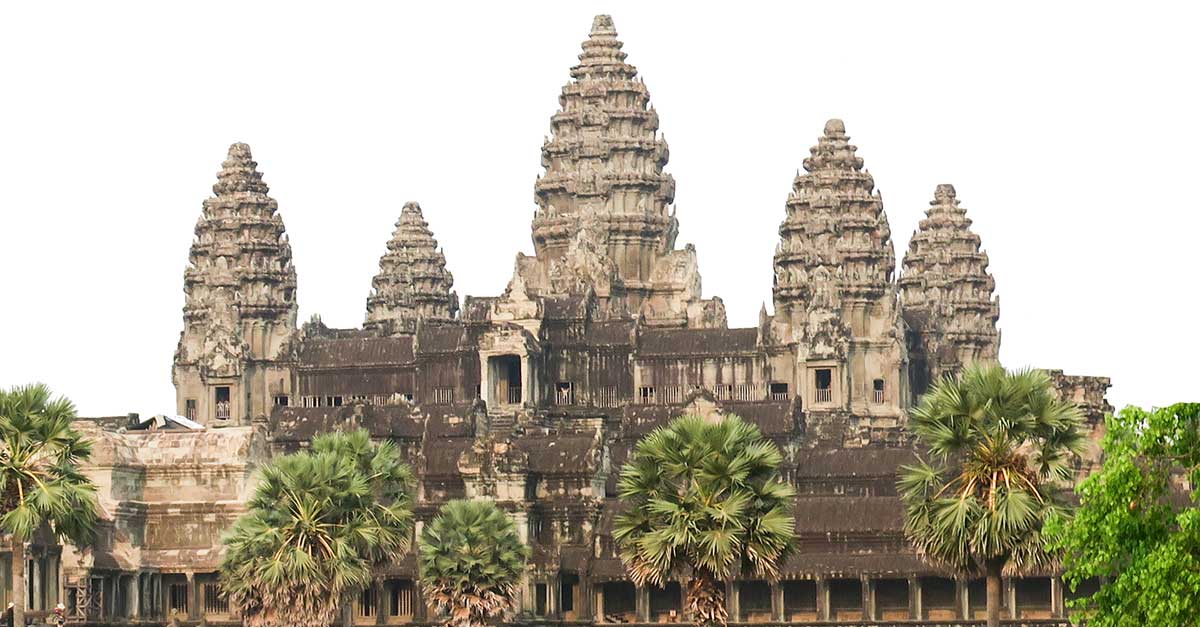Tips for Visiting Angkor
Expert advice for visiting Angkor and the temples of Angkor Wat, Angkor Thom and more.
A trip to Angkor to see the iconic temples of Angkor Wat, Angkor Thom, and Ta Phrom among others, is one of the highlight experiences on any trip to Southeast Asia. To help you maximize your visit, we’ve provided advice to make your trip go smoothly. Enjoy exploring Angkor!
Angkor Opening Hours
In general, the temples are open daily from 7:30am – 5:30pm. However, three temples have extended hours to accommodate sunrise/sunset visits:
- Angkor Wat opening hours: The quintessential sunrise spot, Angkor Wat is open from 5am – 5:30pm
- Phnom Bakheng opening hours: Set on a natural hill, this is a very popular temple for sunset (to be honest however, we prefer Bayon for a peaceful sunset expereince. Phnom Bakheng is open from 5am – 5:30pm
- Pre Rup opening hours: The only temple in Angkor that is open to accommodate sunrise and sunset visits, many people come here to escape the crowds at Angkor Wat and Phnom Bakeng. Pre Rup is open from 5am – 7pm
Tickets
Daily passes. Tickets to Angkor are sold in one-day (20 $USD), three-day (40 $USD) and seven-day (60 $USD) blocks and can be paid in cash only. The seven-day ticket can be used over a period of 30-days, which is helpful if you plan to travel in the area and then return to Siem Reap.
Ticket office location. The primary ticket office is located on the main road (Charles de Gaulle) that runs north-south between the town of Siem Reap and Angkor Wat. We have marked its precise location on Google Maps. You will be required to stop here each morning to check your ticket.
Constant checks. Be sure to always carry your ticket. It will be checked (and punched) on each park entry and at the entrance to nearly all temples.
For more information, see Angkor’s official website.
Getting around Angkor: Bicycle, Tuk Tuk or Car?
While the core area of Angkor can be toured on a bicycle, the temples are spread over a large area, which may make it impractical. To put it into perspective: just getting from the center of Siem Reap to Angkor Wat (in the primary cluster of temples) is 6.5 km (4 miles); and getting from this central cluster to another highlight temple, Banteay Srei, is another 25 km (15.5 miles). As a result, most visitors opt for a car or tuk-tuk. You can calculate all of the distances on our Google Map.
Tuk tuk or car? Most independent travelers to Angkor choose to visit the temples by tuk tuk or car. Although a car certainly offers a level of comfort that is unattainable in a tuk tuk (most notably, air conditioning), we recommend touring by tuk tuk, which provides a much more local feel.
Dress Code
Visitors are advised to wear clothing that covers their shoulders and legs down to the knees. While there is generally lax enforcement of this rule, there are two temples that are strict: Angkor Wat (to reach the third-level summit) and Baphuon. Since just covering up with a scarf is deemed insufficient, we advise wearing or carrying a t-shirt that can be worn while accessing these two temple locations.
How Many Days in Angkor?
Whether a visit to Angkor is the destination or just one part of your Southeast Asia tour, it’s easy to tailor an itinerary that fits your timeline and preferences. But, while it’s certainly possible to see the highlights in one or two days, for curious travelers, we suggest a minimum of three days to really experience what Angkor has to offer. The temples are spread over a huge area and we feature 23 of the best temples (there are more!) in our guidebook. Although some of the smaller temples can be visited in under an hour, for the largest sites, like Angkor Wat, you will most likely spend 2-3 hours exploring the site. As an added bonus, a longer stay allows you to eat lunch and take a rest during the hottest part of the day and return later for a pleasant sunset visit.
Temple Itinerary & Map
View our map and ratings for 23 of the best temples, including Angkor Wat, Angkor Thom and more. To help you create your own itinerary, we have ranked each temple, highlighting the best and noting those that are of particular importance. This will be especially helpful for those with limited time.
Get the Guide
Download today! With insightful profiles for 23 of Angkor’s top temples and nearly 200 high-resolution images, this is the definitive guide to Angkor, Southeast Asia’s premier World Heritage destination. The ancient city’s temples inspire with their innovative architectural designs, world-class narrative reliefs and Hindu-Buddhist iconography. Still infused with their historical magic, they are yours to discover.
Please note that some of the links above are affiliate links; as an Amazon Associate, Approach Guides makes a commission from qualifying purchases.



 Free to use under the Unsplash License (https://unsplash.com/license) https://unsplash.com/photos/aerial-photography-of-brown-mountain-6v3b-b6ZOI4
Free to use under the Unsplash License (https://unsplash.com/license) https://unsplash.com/photos/aerial-photography-of-brown-mountain-6v3b-b6ZOI4 Free to use under the Unsplash License (https://unsplash.com/license) https://unsplash.com/photos/photography-of-lion-LmVSKeDy6EA
Free to use under the Unsplash License (https://unsplash.com/license) https://unsplash.com/photos/photography-of-lion-LmVSKeDy6EA